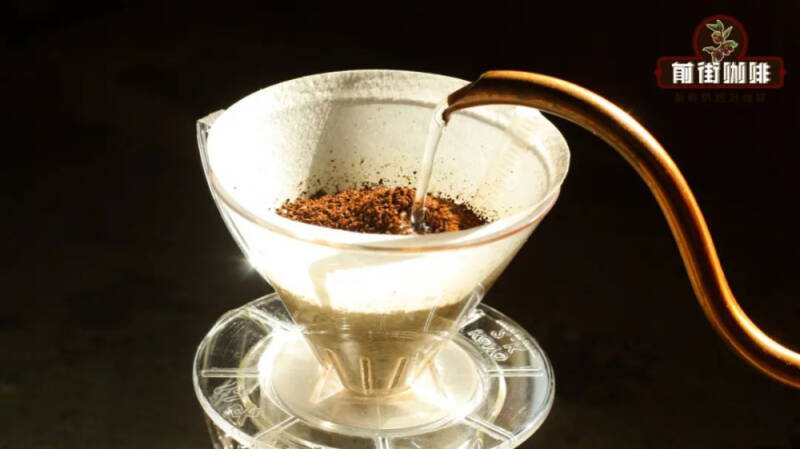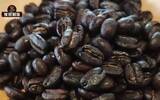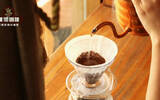What are the advantages of KONOS 1925 famous filter cups? What are the characteristics of the deep-roasted coffee they brew?
Yesterday, a guest friend came to the store and asked Qianjie: "I see your hand products only use V60. Are you not going to try other filter cups?"

Well, that's a bad thing to say. In fact, Qianjie has been using filter cups other than V60 for production, but it is because the appearance frequency of V60 is higher, so it creates such an illusion. For example, deep-roasted coffee beans are produced using Kono filter cups in front of the street.

As for Kono, many friends in China may not know much about it. Because most of the tapered filter cups used in the market are V60 with fast launching speed, or filter cups with distinctive features such as Origami, only a very small number of players will use Kono for cooking, which makes people know very little about Kono filter cups. OK, so let's start from Qianjie today and explain what kind of advantages this filter cup has.
KonoKono can be said to be the favorite brand of coffee utensils for Japanese coffee lovers or professionals. It was founded in 1925 by Mr. Bin Kono, so the name Kono is taken from the name "Kono". At first, the main business of the Kono brand was the production of siphon pots.
As the business continues to expand, Kono involves the production of other coffee utensils, as well as the roasting of coffee beans. Because he was born to make siphon pots and loved the mellow deep-roasted coffee, in 1973, Mr. Toshio Kono, the second-generation president who took over as Mr. Kono, invented the first tapered filter cup with ribs-"Kono MD-21". According to rumors on the Internet, it took Mr. Kono more than 10 years to determine the length and depth of the ribs of the filter cup. The ribs of the original Kono filter cup were as long as half of the body of the filter cup, with a total of 12. And since it is the first generation, then there must be other different versions! It is true: in 2010, Kono improved the original filter cup, shortening its ribs to the original 2max 1, and it is the famous coffee circle "kono Meimon" (kono family), the model is MDN-21; in 2015, Kono launched the 90th anniversary filter cup, the ribs of this filter cup will be shorter than before. After selling out, the regular model "Konos since1925" of the filter cup was launched, and the model was MDK-21. (note: Konos is the original brand name of Kono)
Because there is not much difference in appearance among the three styles, many friends are often confused by these numbers and models. Qianjie is here to sort out for you, at present, the best sellers on the market are Mingmen and Konos, because their ribs will be shorter and the water seepage holes will be smaller. In terms of flow rate, it is MD-21 (primary Kono) > MDN-21 (Kono Meimon) > MDK-21 (Konos Since1925).
But no matter which kind of filter cup, the upper body of the filter cup does not have any ribs, so the upper body of the filter cup can be completely glued to the filter paper. Because the filter paper can fully fit with the upper filter cup, the upper part of the filter cup with coffee powder and hot water will form an airtight space, and there will be no bypass water, but it will also hinder the circulation of air. When the coffee liquid flows out of the hole, it takes away some of the air that seeps down because there is no gap, which causes the filter paper to form a negative pressure space with the lower part of the filter cup that does not fully fit. On the other hand, the coffee powder layer is under positive pressure, and the pressure difference will press the liquid down, so the coffee liquid will seem to be drawn out of the filter cup hole. This is what makes the Kono filter cup designed by Mr. Kono modeled on the siphon effect of the siphon pot special. Many friends do not wet the filter paper when using the Kono filter cup in order to make the coffee powder have a good exhaust passage when steaming. Then the filter paper will gradually close the filter cup under the heavy pressure of coffee powder and coffee liquid, and by the time of formal extraction, the filter paper will basically complete the bonding, which can be said to be very comfortable!
What is the Kono filter cup suitable for cooking?
The flow rate of Kono series filter cup is generally slow, so it is more suitable for deep-roasted coffee beans. Because you want to make a pot of delicious deep-roasted coffee, you need to obtain more abundant substances through a more complete extraction to increase the alcohol thickness and tail rhyme. However, the characteristics of deep-roasted beans are low density and easy extraction, so it will be very easy to extract according to the original parameters of brewing shallow roasted coffee, so it needs thicker grinding to avoid the occurrence of over-extraction. Rough grinding will increase the space in which water can flow and launch faster. Therefore, the slow flow rate of Kono filter cup can be shown incisively and vividly at this moment. Due to the slow flow rate, it can provide more extraction time for rough ground deep-roasted coffee, which in turn makes the coffee have more extraction and more mellow taste.
Of course, the longer extraction time means the improvement of extraction efficiency, we need to reduce the overall extraction efficiency by lowering the water temperature. So generally Qianjie in the use of Kono filter cup boiling deep baked beans, will apply such parameters: 1:15 powder to water ratio, 88 °C ~ 90 °C water temperature, Ek43 11 grinding scale / 20 sieve 75% oversieve rate, three-stage cooking, 15g powder cooking time will be about 2 minutes. (note: this is a heat shock parameter)
With the blessing of this formula, we can get a cup of delicious, long and mellow deep-roasted coffee with the highest fault tolerance! It should be noted that deep-roasted coffee beans are very crisp because they are roasted for a long time, so it is easy to produce a large amount of fine powder during grinding. Therefore, in the process of brewing, we had better reduce the action of large water flow and fast circle water injection, and reduce the number and intensity of stirring, otherwise it will be very easy to cause blockage. Finally, because the extraction time is too long, all the bitter substances that should not be extracted are released. That is really: Thai bitter!
-END-
Important Notice :
前街咖啡 FrontStreet Coffee has moved to new addredd:
FrontStreet Coffee Address: 315,Donghua East Road,GuangZhou
Tel:020 38364473
- Prev

Why do Japanese brewing like to use large amounts of flour above 20g? What is high concentration and low extract?
Remember the Japanese brewing that Qianjie shared with you the day before yesterday? If you go into the portal attached to the article and learn more about brewing, it is not difficult to find that no matter which brewing method, the amount of powder used is very large. So the question arose: "Why do Japanese brewing like to use large amounts of flour? "Why day
- Next

Can I make coffee with ice? How much ice and water should be added to the same ice cream in a coffee shop?
When many friends go to a cafe to drink coffee, they often have the mentality of learning while carefully observing the barista's movements and processes, while quietly asking for various parameters, hoping to reproduce the same taste when they go home. For example, recently, Qianjie stood in the bar and brewed iced coffee. The friends who came to watch not only
Related
- Is espresso stored overnight in the refrigerator harmful to your body? Is frozen coffee better than freshly ground coffee?
- What parameters and proportions of water temperature should be used to grind and brew fresh coffee beans? Why can't I drink freshly roasted coffee right away?
- Customers have "changed" Manner's new products! Shop assistant: Please don't mess around!
- Remove sockets in customer areas at Starbucks stores?! Netizen: I won't go if I really tear it down
- What is the difference between the taste steps of sun-dried coffee and washed coffee? Why is sun-cured coffee sweeter and washed coffee sour?
- The recipe for salty grapefruit dirty is revealed! Coffee Festival salty grapefruit dirty coffee making materials parameters ratio milk share!
- How about the flavor of Sunlight 74158 at Sidamo Banshaha Mathieu Processing Factory in Ethiopia? 74158 Share the proportion of coffee brewing parameters!
- What effect does Italian American coffee with filter paper have? Will coffee taste better if it is put on filter paper at the bottom of the powder bowl?
- What is the color difference in coffee beans? What are the characteristics of honey processed coffee beans? Why are the anaerobically treated coffee beans uneven in color?
- How does novice Xiaobai quickly get started and make coffee? Newbies learn to make coffee by hand and share the specific steps and process process!

